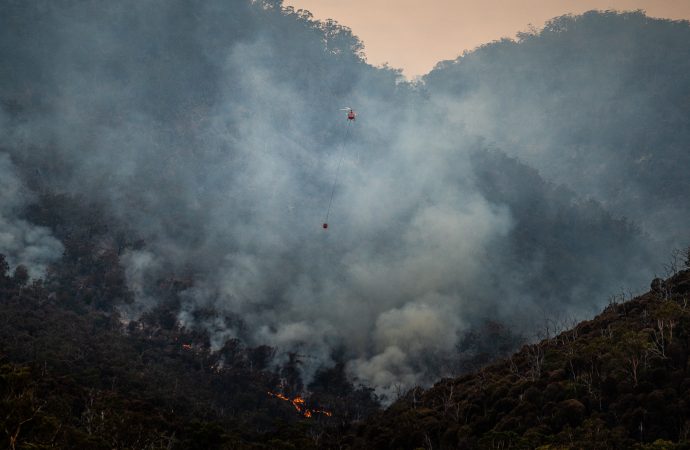Introduction: The devastating wildfires that engulfed Australia not only caused widespread destruction and loss but also had far-reaching effects on global weather patterns. In a remarkable chain of events, the intensity of the fires played a significant role in triggering La Niña, a climate phenomenon that has led to notable changes in weather patterns
Introduction:
The devastating wildfires that engulfed Australia not only caused widespread destruction and loss but also had far-reaching effects on global weather patterns. In a remarkable chain of events, the intensity of the fires played a significant role in triggering La Niña, a climate phenomenon that has led to notable changes in weather patterns across the United States. In this article, we delve into the intricate connection between Australia’s wildfires, La Niña, and the altered weather conditions experienced in the US.
The Intensification of Australia’s Wildfires:
Australia experienced unprecedented wildfires that ravaged vast areas of land, destroying ecosystems, homes, and wildlife. The intensity and scale of these fires released an enormous amount of heat and smoke into the atmosphere. The resulting smoke plumes soared high into the stratosphere, carrying with them particles and gases that would later impact weather patterns on a global scale.
The Influence of Wildfire Emissions on Atmospheric Conditions:
The smoke particles emitted by the wildfires interacted with the atmosphere in complex ways, altering temperature gradients and atmospheric stability. The aerosols released by the fires absorbed and scattered sunlight, leading to a cooling effect in the lower atmosphere and a warming effect in the upper atmosphere. These changes set the stage for a cascade of atmospheric phenomena, including the onset of La Niña.
The Role of La Niña in Weather Pattern Alterations:
La Niña is a climate pattern characterized by the cooling of surface waters in the central and eastern Pacific Ocean. It has a profound influence on global weather patterns, including the United States. The wildfires in Australia, with their impact on atmospheric conditions, acted as a catalyst for the formation of a strong La Niña event.
La Niña’s Impact on the United States:
La Niña typically brings colder and wetter conditions to the northern parts of the United States and drier conditions to the southern regions. The altered temperature and moisture patterns have resulted in a series of extreme weather events across the country. These include increased rainfall and flooding in some regions, as well as prolonged droughts and heightened wildfire risks in others.
Implications for the Future:
The connection between Australia’s wildfires, La Niña, and the altered weather patterns in the United States highlights the intricate nature of our global climate system. As wildfires continue to occur with greater frequency and intensity due to climate change, it is essential to understand the cascading effects they can have on regional and even global weather patterns. This knowledge will aid in developing more accurate climate models and improving our ability to predict and mitigate the impacts of extreme weather events.
Conclusion:
The devastating wildfires in Australia have left an indelible mark on both local ecosystems and global weather patterns. The link between these fires, the formation of La Niña, and the subsequent alterations in US weather patterns serves as a stark reminder of the interconnectedness of our planet’s climate system. As we grapple with the increasing challenges of climate change, understanding these complex relationships will be vital in preparing for and mitigating the impacts of future extreme weather events.

















Leave a Comment
Your email address will not be published. Required fields are marked with *